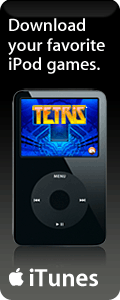
Gatorade erodes teeth faster than Coke, a new study shows.
That doesn’t mean that Gatorade and other sports drinks are necessarily harder on your teeth than are Coke and other soft drinks. But it may be a surprise that they aren’t any better, either, says researcher Leslie A. Ehlen, a student at the University of Iowa School of Dentistry.
“I don’t think everybody realizes how erosive these things are, especially Gatorade and Red Bull,” Ehlen tells WebMD. “People need to be aware that all sorts of beverages can be causing dental erosion.”
Ehlen presented the study at this week’s annual meeting of the American Association for Dental Research in Orlando, Fla.
More and more dentists now think sugary drinks are the major culprit in tooth decay, says Brian Burt, PhD, professor emeritus of epidemiology at the University of Michigan School of Public Health.
“There is pretty good evidence now that this is not just sports drinks, but soft drinks and juices in general,” Burt tells WebMD. “They have become the main source of sugars in the diet. It comes down to the more sugar in the drink, the more risk of [cavities] to the person drinking it.”
1 Day of Soft Drinks, Lots of Erosion
The University of Iowa researchers covered extracted teeth with nail polish. They left bare two patches on each tooth, one on the enamel and one on the root. Then they dunked the teeth in test tubes filled with regular Coke, Diet Coke,Gatorade, Red Bull, or 100% apple juice.
Every five hours, the researchers refreshed the beverages. After 25 hours, they examined the teeth with a microscope. All of the beverages eroded the bare spots on the teeth. But different beverages had significantly different effects.
On the enamel, Gatorade was significantly more corrosive than Red Bull and Coke. Red Bull and Coke, in turn, were significantly more corrosive than Diet Coke and apple juice.
On the roots of the teeth, Gatorade was more corrosive than Red Bull. Coke, apple juice, and Diet Coke followed in that order.
The difference in the effect isn’t simply due to their sugar content. Gatorade is 6% carbohydrates, mostly sugars. Coke is about 10% sugar. Both are acidic beverages.
University of Michigan pediatric dental researcher Michael Ignelzi, DDS, PhD, has recently reviewed new research on the effects of beverages on children’s teeth. But he says there’s no evidence showing thatsports drinks are any worse than other soft drinks.
“I know of no data that sports drinks are more harmful than other drinks,” Ignelzi tells WebMD.
Sports Drinks and Cavities
Because of their acidity and sugar content, researchers have studied the role of sports drinks in the development of cavities. Most of the studies, however, exonerate the sports drinks.
Craig Horswill, PhD, senior research fellow at the Gatorade Sports Science Institute, in 2005 reported a study of saliva flow in endurance athletes who drank Gatorade, diluted orange juice, a homemade sports drink, or water. The study showed that if the sports drinks had any effect, it was to decrease dehydration and increase saliva flow, which reduces cavity formation.
More to the point, a 2002 Ohio State University study of 304 athletes found no link between sports-drink use and dental erosion. The study was sponsored by Quaker Oats, which makesGatorade.
“Dental erosion among users of sports drinks in the Ohio State study was the same as it was in nonusers,” Horswill tells WebMD. “And they averaged 10 years of sports drink use.”
Ignelzi says that what matters most isn’t which beverage people drink. It’s how and when they drink it.
“A lot of things can cause [cavities], including sugared drinks. It is the way they are taken that is most important,” he says. “The frequency of exposure is key. If you sip a Pepsi all day, that is very harmful. But if you are taking any sweet or carb — cheese puffs, bread, raisins — if you take it during meals, it is a good thing. Because the saliva stimulated by your chewing buffers the acid. But if you are constantly snacking on sweets or sipping a sweet beverage, your teeth are exposed to acid all day long.”
What's an alternative?
There is a new product called YOLI. It comes in the form of a cap that you place on top of your water bottle, you then push the cap down and the formula is blasted into your water! Kids LOVE this!
What's different about YOLI? It's all natural, contains NO ADDED SUGAR and has nothing artificial! NO PRESERVATIVES, NO artificial colors or flavors! It's naturally sweetened with STEVIA, which makes it a perfect alternative to Gatorade and other sugary sports drinks!
For more information on Yoli and how you can offer Yoli at your gym, visit www.1Blastcap.com or call 614-522-YOLI for more information!




























